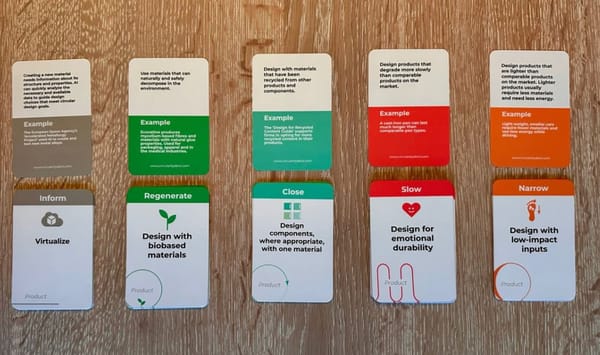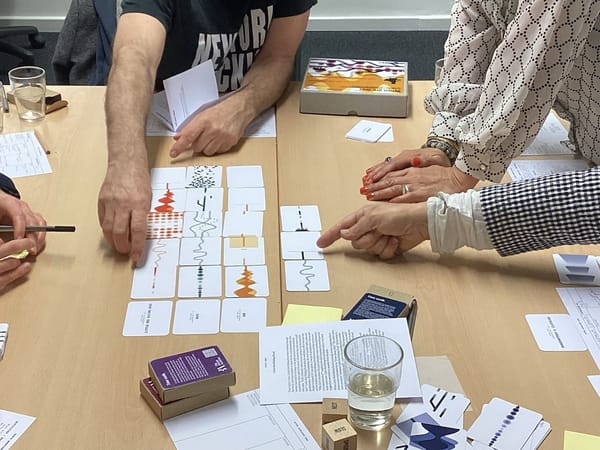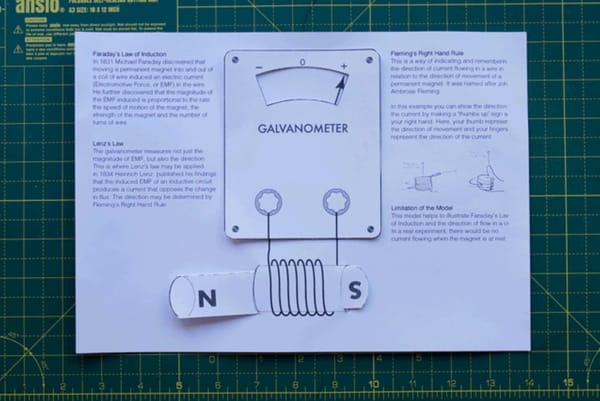№ 106 | AI Design Kit, Ladder Bridge Window, Four Ways to Counter Narratives of AI Inevitability, BASIC Framework, Repicturing the Double Diamond, Metadesign For Murph, and A Model for the Many Variations of Visual Thinking
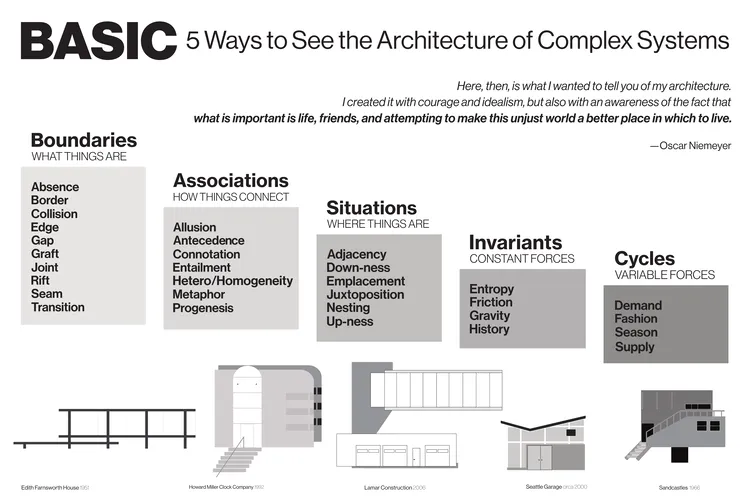
Without intending to… this issue of Thinking Things turned into the “frameworks to think with” issue. No card decks in this roundup — next time!
AI Design Kit
Is this a framework? Is it a toolkit? Whatever label you use, the AI Design Kit looks like a useful vocabulary for thinking about AI capabilities. There’s also a series of workshop activities designed “to improve the ideation of AI products and services.”

It’s worth noting this was published in 2023, which feels about right. I know around that time I felt a lot more in the dark, and was looking for verbs to help me conceptually understand “what is possible with AI?” I feel like, now in 2025, we have a LOT more examples of what is possible and could probably build upon this vocabulary.
Connecting the dots: This fits with the task cards from Alex Eisenchteter's AI Tinkerers Cards (also verbs), and also this post on more granular examples of “Where AI Belongs in UX Research and Where It Doesn’t.” Oh, and let’s not forget the AI prompt deck mentioned in issue № 104.
Ladder. Bridge. Window.
Last issue, I shared an end-of-workshop reflection activity using a Square, Circle, and Triangle.
This issue, here’s another end-of-workshop reflection activity using Ladder, Bridge, and Window LEGO® pieces.
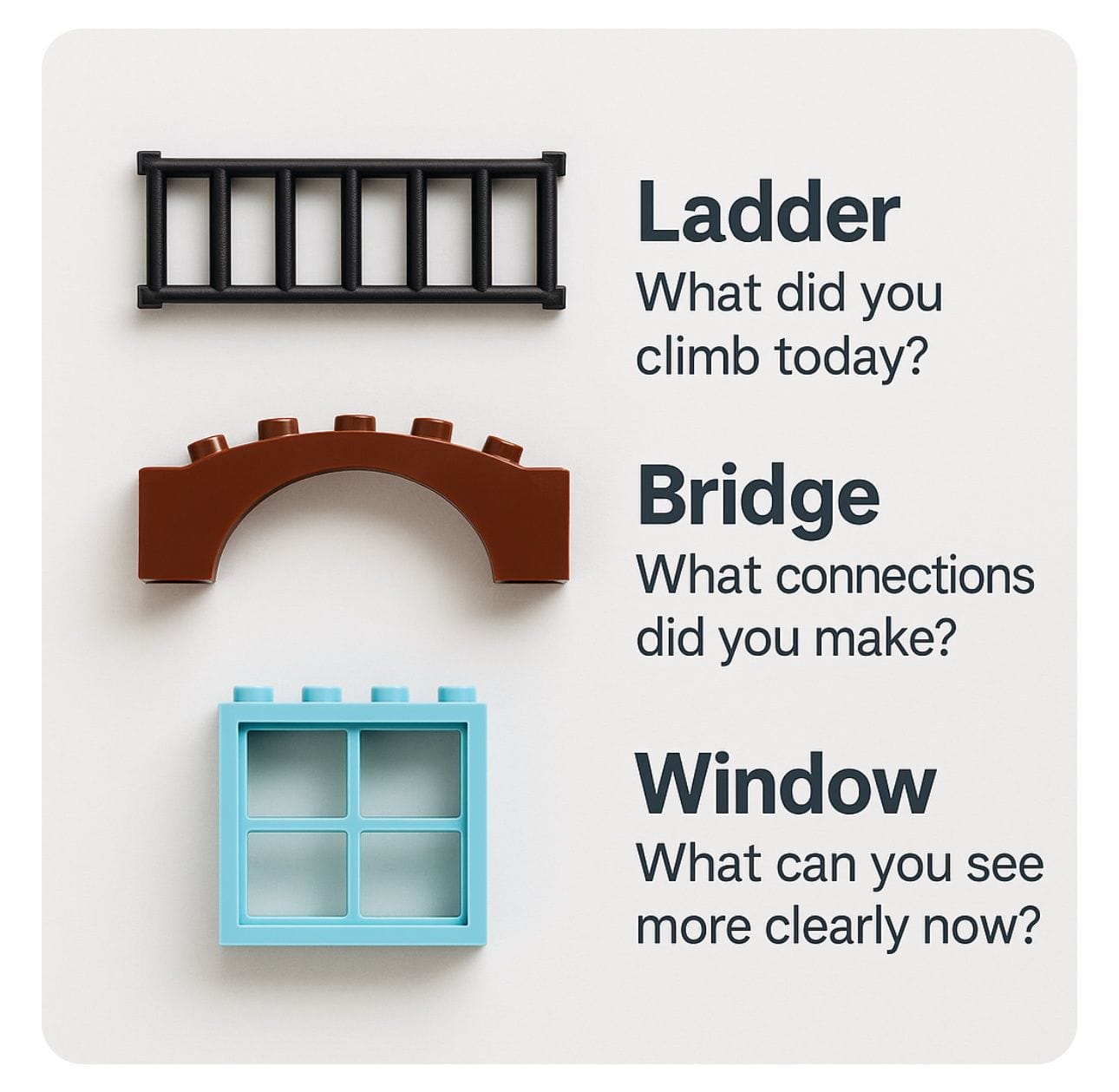
Buried in the comments, someone else suggests an Elephant, Bee, and Monkey trio, but you’ll have to read the post for more details… 😉 .
[I’m sure there’s a post in all this concerning shapes, metaphors, conceptual associations, and projection. Not today, though. 🤪]
Four Ways to Counter Narratives of AI Inevitability
Two issues ago, I shared how John Cutler characterizes most AI conversations as falling into a “Justing or Butting” position, with a push for “the magic in the middle.”
Along similar lines, here’s another thinking framework, a crisp articulation of “four ways to counter narrative of AI Inevitability.”
I like this… a lot. Though, my first reaction (to any framework) is to ask “what’s missing?” In the LinkedIn post announcing this project and publication, one commenter suggested adding ‘Demystify’ to the framework. I like that. I might also consider something like ‘Redirect’, with images of Judo masters or water benders working with and altering the flow of energy. Anyway, I’m glad these conversations are happening.
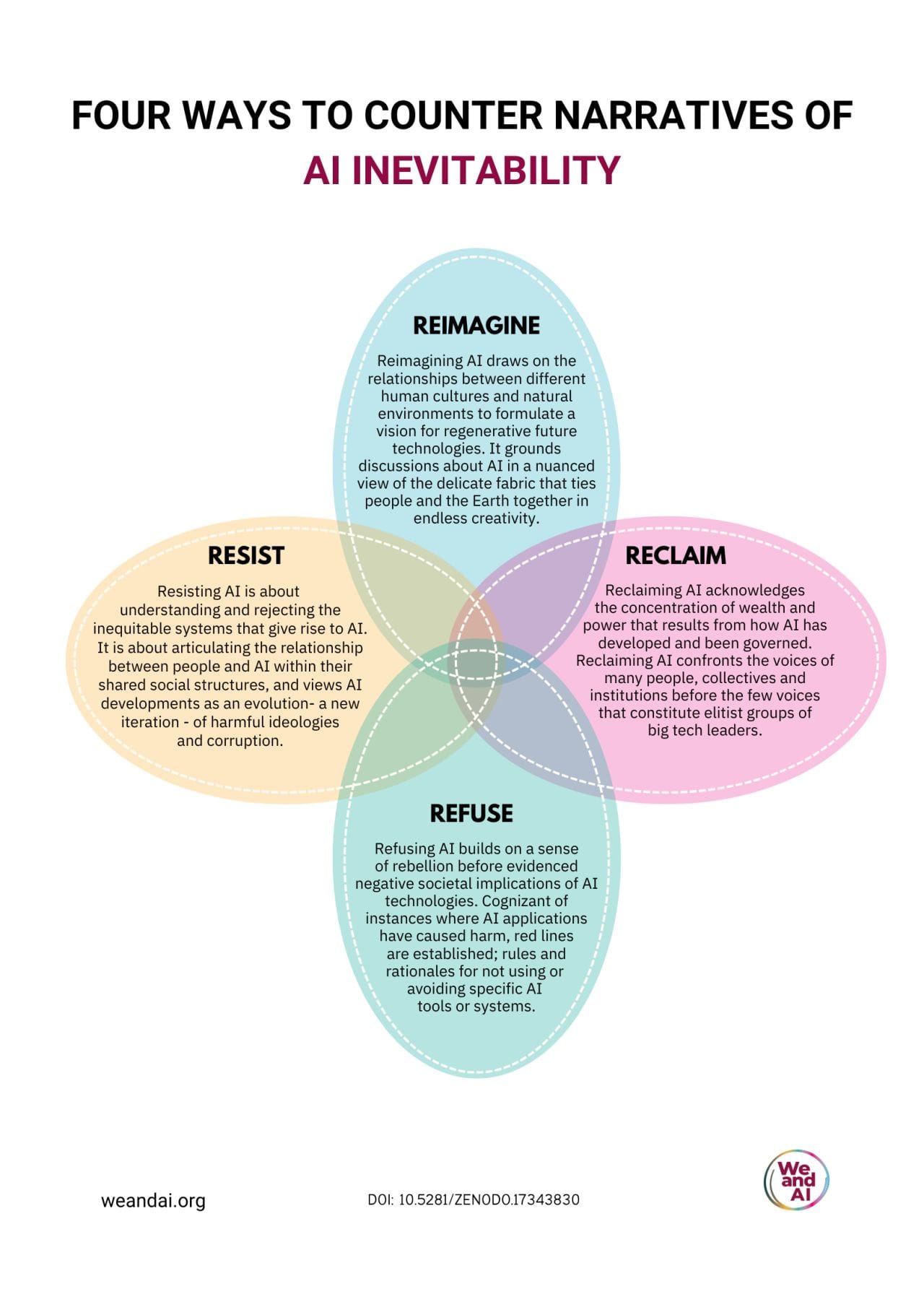
BASIC Framework (+ Zine!)
Here’s a thinking framework I’ve planned to share for some time. And now that there’s a Zine version—even better!
Context: Dan Klyn teaches courses and workshops on information architecture, and he’s developed the BASIC framework, which presents ‘5 Ways to See the Architecture of Complex Systems’.
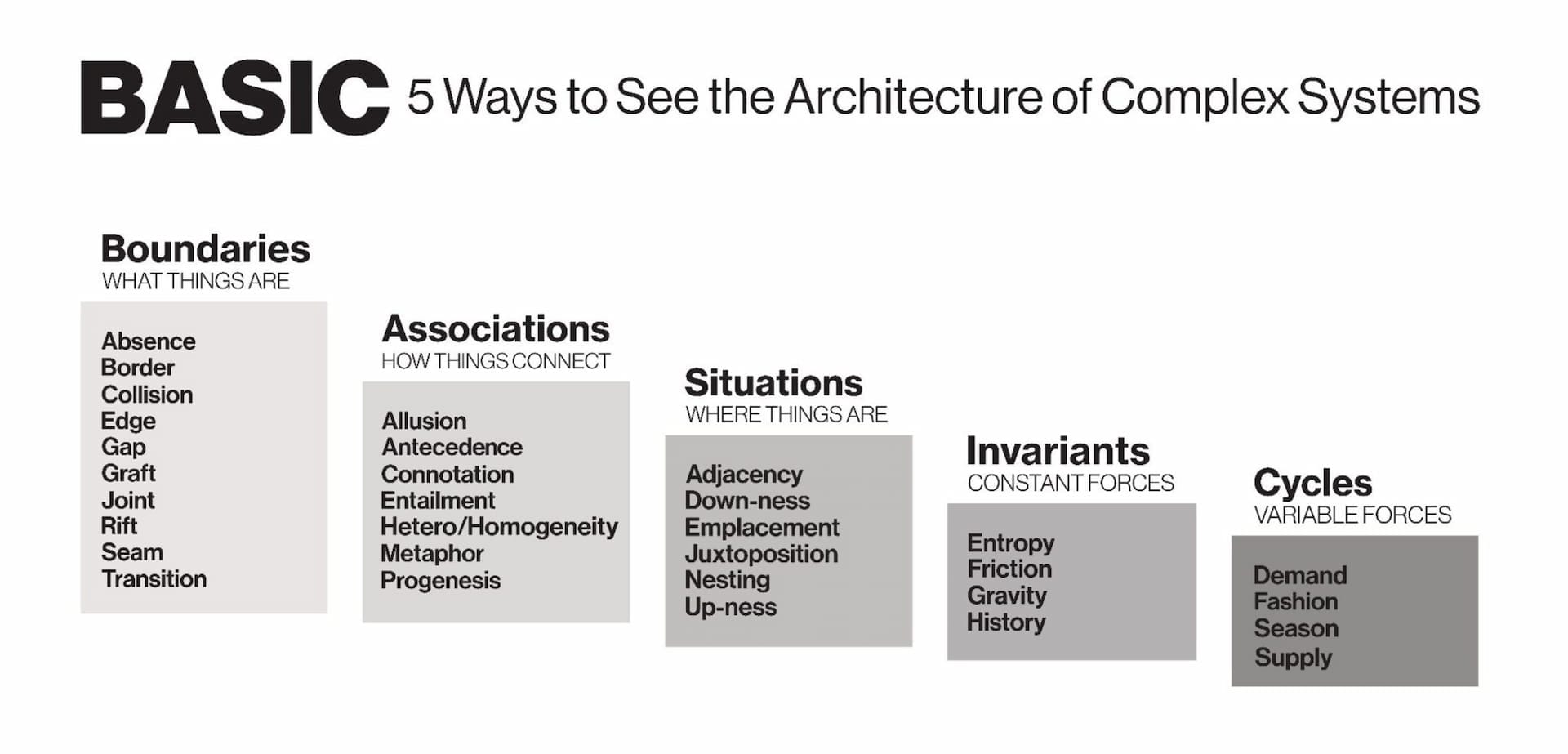
- Boundaries — What things are
- Associations — How things connect
- Situations — Where things are
- Invariants — Constant forces
- Cycles — Variable forces
You can visit the BASIC Framework web page for a basic explanation (🥁ba-dum-tss!) and a free download of the posters and mini book 🎉. And… You can also check out slides from his class, for more examples of what this is all about.
Repicturing the Double Diamond
“Here’s how I reframe the Double Diamond as a 2×2.” [LI]
Wait! Before you skip this because < yawn > it’s yet another post about the Double Diamond—it’s not. Rather, this is a short masterclass in repicturing—representing the same information in a different way.
Also, bonus points for representing what is often viewed as a linear process as a series of learning loops.
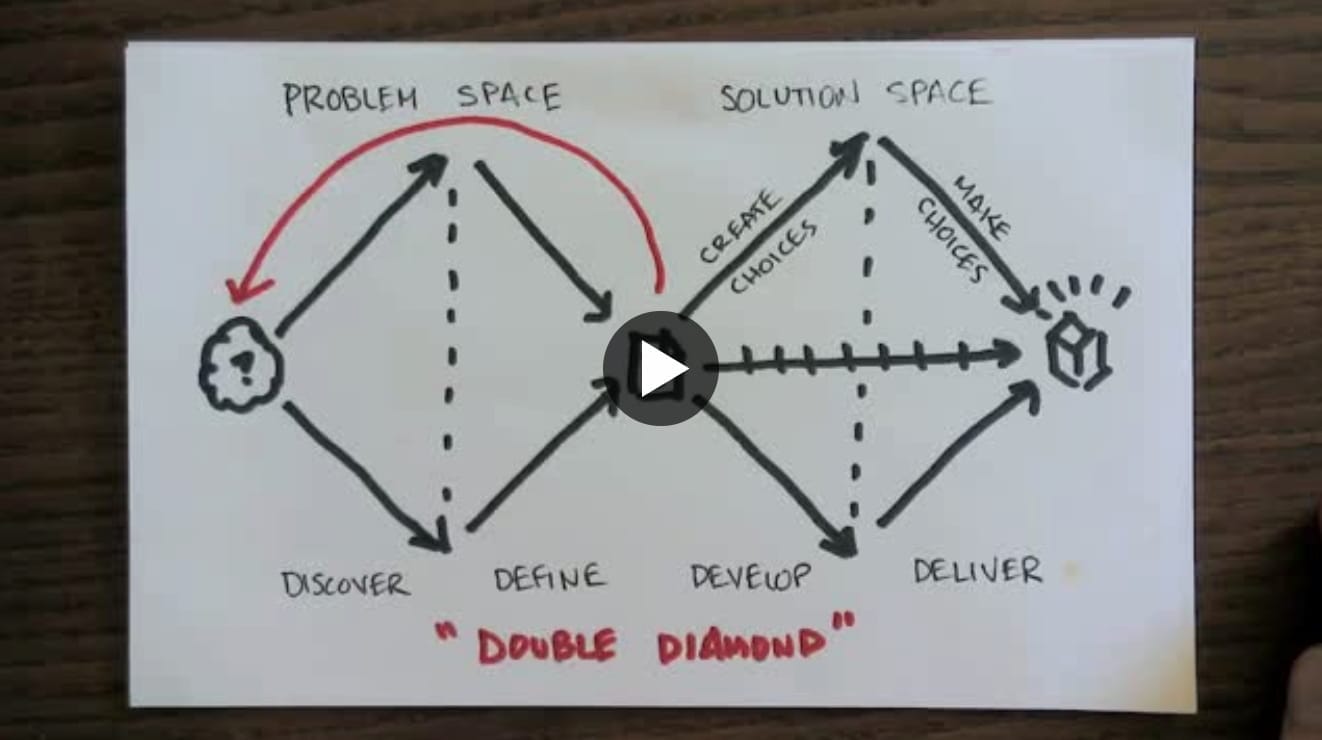
It’s worth mentioning that this repictured version in the video above is essentially the same model used (created?) by Vijay Kumar, as the organizing framework used in his book 101 Design Methods
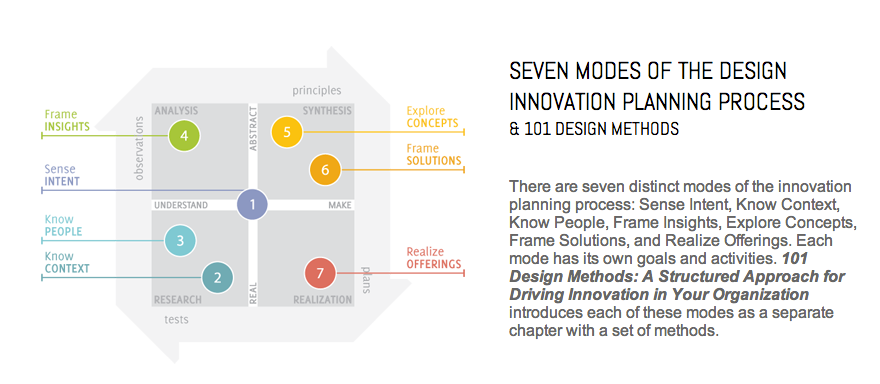
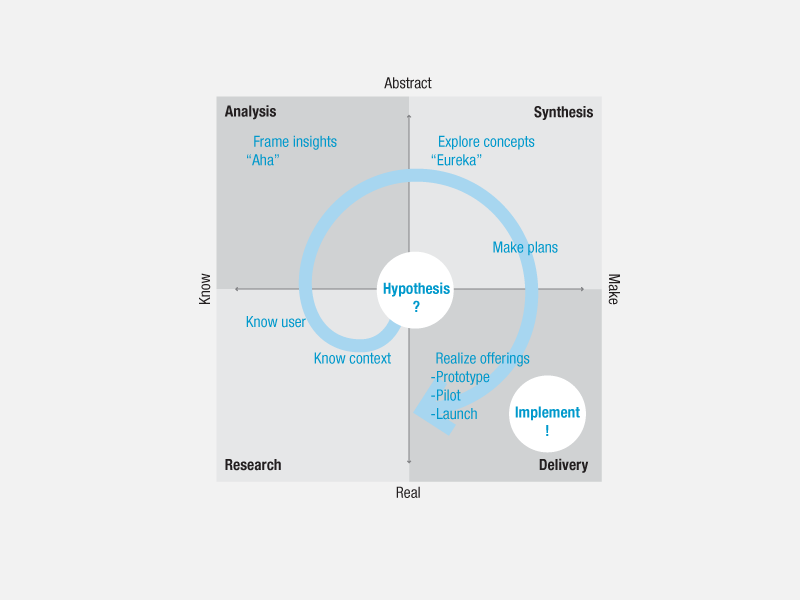
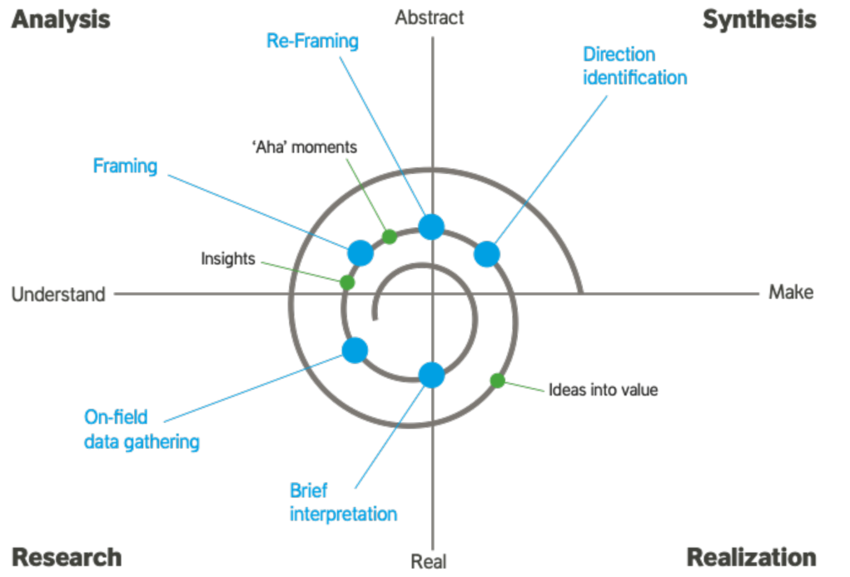
Two versions and an adaptation of Vijay Kumar's model from 101 Design Methods.
[Talk] “Metadesign For Murph”
I’ll admit, I watched this talk from dConstruct 2015 mostly because of the Interstellar references. That, and… I’ll generally watch anything from John V Willshire. Smart guy. Provocative thoughts. Etc. Etc. So what’s John’s Metadesign for Murph talk all about?
Superman. Superhero movies. Parenting. Interstellar. Card decks. The Periodic Table of Elements. Architecture. It’s a meandering collage of reflections that orbit and then converge upon something John and I share a passion for:
Creating environments and opportunities for others to design for themselves, rather than presuming we have all the answers ourselves.
Good stuff! 😍
And where are the frameworks? John refers to them as maps in this talk, but… same thing.
A model for the many variations of visual thinking
Following the Sketch Your Mind Conference, fellow visual thinker Matthias Melcher shared this brief post as a kind of meta-reflection on the many flavors of visual thinking included under this umbrella term.
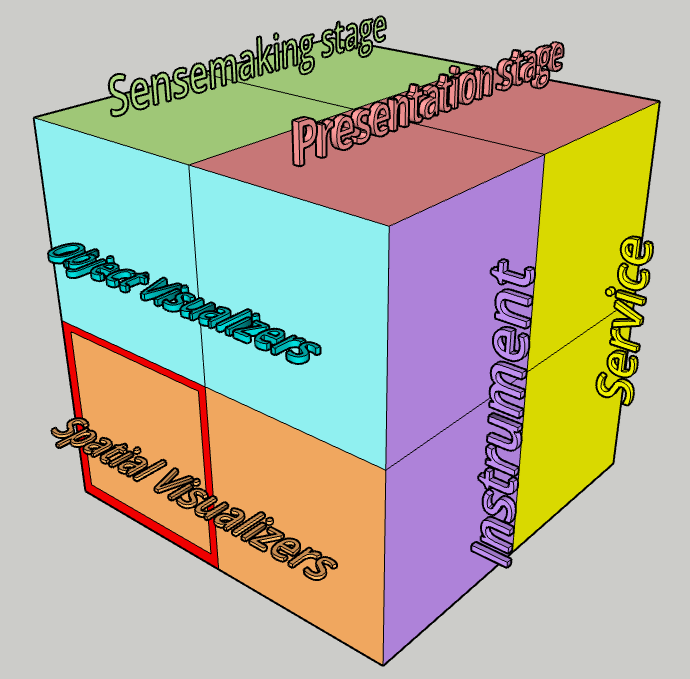
Random Stuff:
- Check out what The Oatmeal has to say about AI art. This very-visual post pairs nicely with Ted Chiang’s very not-so-very-visual essay on “Why A.I. Isn’t Going to Make Art” [archive link].
- Chitchat Chess [LI] turns Chess into a cooperative game, where “every piece has to find and meet its opposite.” 🤩
- Have some fun playing with this Sticky Thing!
- Here’s a family tree of popular playing card games.
- Yep. I love that line in the new Superman movie about how ‘[kindness] is the real punk rock’. Anyway, here’s an 8-minute video expounding on the cultural significance of this message: How one line saved Superman.


